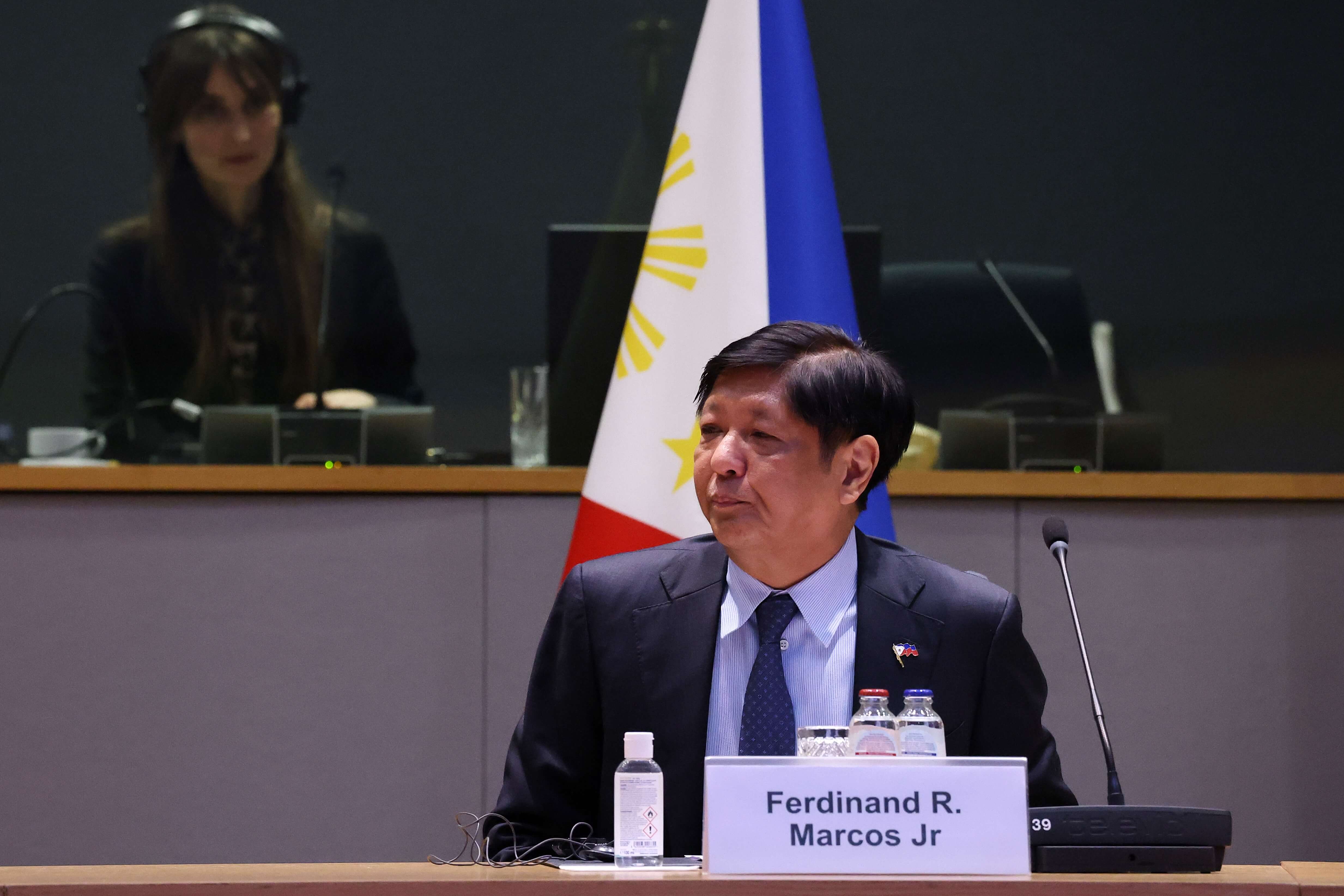In his meetings with US President Donald Trump in Washington this week, Philippine President Ferdinand Marcos, Jr., is navigating a challenging new reality: a place under America’s security umbrella no longer comes with a discount at the customs window.
When it comes to trade, Trump throws allies and adversaries into the same basket. But Marcos thinks he can negotiate an agreement that preserves and even strengthens the US-Philippines trade relationship.
The United States gains a considerable strategic advantage from its access to nine Philippine military sites – part of the mutual defense treaty that has been in place since 1951.
From Balabac in Palawan, which faces the disputed Spratly Islands, to airfields overlooking the Bashi Channel between Luzon and Taiwan, US military planners regard these outposts as indispensable to America’s new dispersed force posture, designed to counterbalance Chinese power in the region.
But this was not enough to shield Philippine steel exporters from US tariffs in 2018, during Trump’s first administration.
Nor did it prevent Trump from reducing the trade advantages enjoyed by the Philippines under the Generalized System of Preferences. Instead, Trump has repeatedly argued that allies should pay for US protection.
A demand for cash or market concessions
Many of America’s allies have interpreted this as a demand for cash or market concessions. But Trump’s team walked away from a seemingly done deal with Japan: after months of shuttle diplomacy, the country still faces a 25% tariff on its exports to the US, scheduled to take effect on August 1.
The same goes for South Korea – host of nearly 30,000 US troops – which had a prior tariff exemption eliminated in February, when the Trump administration decided that its electric vehicles threatened US jobs.
If the heavier hitters failed, why should the Philippines succeed?
Meanwhile, Australia – one-third of the AUKUS security partnership, with the US and the United Kingdom – has been slapped with a baseline 10% tariff on nearly all its exports to the US, with more tariffs likely to come.
Even the European Union has been told to expect 30% levies on its exports to the US, despite months of painstaking negotiations. If these heavier hitters failed, why should the Philippines succeed?
An offer Trump can’t refuse
Marcos would say that he is making Trump an offer he can’t refuse. This includes abolishing all tariffs on US soybeans, wheat derivatives, hardwood, firearm inputs, and lead batteries, and cutting the tariff on crude oil to 3%.
Moreover, Marcos is prepared to guarantee annual purchases of 16,000 metric tons of both soy and wheat from the US, along with a 15% increase in imports of US chicken-leg quarters.
He would also waive pre-border verification requirements for US goods, and create a high-level task force to lead negotiations of new deals.
Marcos is also prepared to increase its imports of US liquefied natural gas and ethanol, green-light a regasification terminal (to convert LNG back to natural gas) in Subic Bay, fast-track American oil-and-gas-exploration licenses in the West Philippine Sea, and bring US firms into its geothermal and gas projects.
This deal could trigger nearly $500 billion in US commercial gains over just three years
If that were not enough, the Philippines will offer the US preferential rights to its supplies of nickel, cobalt, and copper – essential to the production of batteries and advanced weapons.
All told, this deal could trigger nearly $500 billion in US commercial gains over just three years.
Marcos would argue that this offer goes well beyond those made by Japan and South Korea, with many of its components – including minerals, LNG infrastructure, firearm inputs, and digital-trade opportunities – linked to job creation in the American Midwest and on the Gulf Coast.
It is also worth noting that US negotiations with Japan and South Korea have been complicated by these countries’ automobile and semiconductor industries.
That was not the case for Indonesia and Vietnam, which did reach trade deals with the Trump administration, and it will not be the case for the Philippines.
Defense considerations
Moreover, while alliances clearly mean a lot more to the Pentagon than they do to the Office of the US Trade Representative, defense considerations should still factor into trade negotiations.
If Trump knows anything, Marcos might assume, it is real estate. With US-China tensions on the rise, the Trump administration should recognize the strategic value of the Philippines’ geography.
If the White House bites, other middle powers would have a useful template from which to work.

If the Philippines resisted being drawn out of the US orbit, an agreement to ease tensions in the South China Sea might seal the deal - Ferdinand Marcos Jr
Australia will study how the Philippines leverages its nickel and copper. Japan and South Korea will examine the deal’s compliance blueprint. Indonesia and Thailand – which are attempting to balance Chinese trade and investment with US defense ties – will consider how to convert their strategic location into tariff relief.
Failure would echo just as loudly, chilling investment and reinforcing the perception that US alliances have morphed into pay-to-play schemes – and expensive ones, at that.
The nine US military facilities in the Philippines would start to look like liabilities: they risk drawing the ire of an emboldened China, while delivering no economic benefits.
China might strengthen its strategic hand another way, seizing the opening to swoop in with its own trade and security arrangements. If the Philippines resisted being drawn out of the US orbit, an agreement to ease tensions in the South China Sea might seal the deal.
We are about to find out whether even the most strategically vital US partners must fend for themselves in the Trump era, or whether they can benefit economically from the security benefits they provide. Many others, not least China, are watching closely.
Eduardo Araral is Professor of Public Policy at the National University of Singapore’s Lee Kuan Yew School of Public Policy.